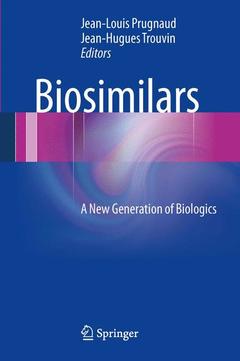Description
Biosimilars, 2012
A New Generation of Biologics
Coordinators: Prugnaud Jean-Louis, Trouvin Jean-Hugues
Language: English
Subjects for Biosimilars:
Keywords
Biomedicine; Biosimilars; Cost; Immunogenicity; Interchangeability
Publication date: 12-2014
90 p. · 15.5x23.5 cm · Paperback
Publication date: 11-2012
90 p. · 15.5x23.5 cm · Hardback
Description
/li>Contents
/li>Biography
/li>Comment
/li>
Biologics have revolutionised the treatment of many severe conditions, delivering exceptional clinical results but also producing exceptionally high prices. As patents expire, copies and price competition are expected throughout the world. However, due to the intrinsic heterogeneity and molecular complexity of biologic medicinal products, their copies cannot simply be authorized under the ?generic rule? valid for small chemical entities.
In response, a dedicated regulation was issued in the European Union. It is based on the concept of ?biological medicinal products similar to a biological reference product?, or ?biosimilars?. This book analyses the context of biotechnological production and addresses the European legal framework for biosimilar market approval. It highlights post-market authorisation issues, such as Risk Management Plans and substitution of products, and outlines some other issues, such as cost management and international nomenclature.
This book is primarily intended for hospital-based physicians and pharmacists. It will also be a valuable resource for all actors from all countries who want to better understand the emergence of these new medicinal products within the European context.
Analysis of the complete legal and regulatory framework
Approach of the context of copies of biology and biotechnology drugs
Details the registration conditions
Analysis of these drugs’ marketing (drug safety, prices and distribution channels, substitution and interchangeability…)
Investments’ costs and returns on investments are also pointed out
A section is focused on the US approach
Includes supplementary material: sn.pub/extras

